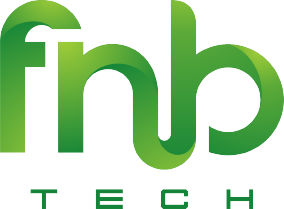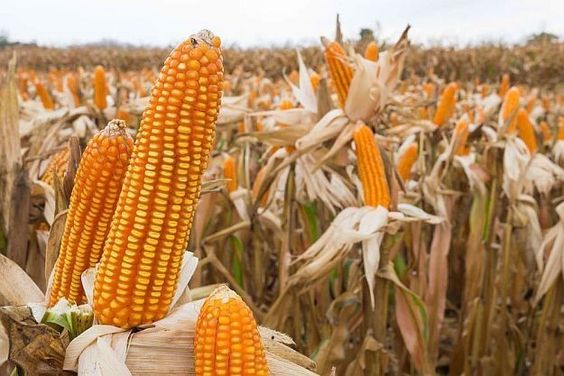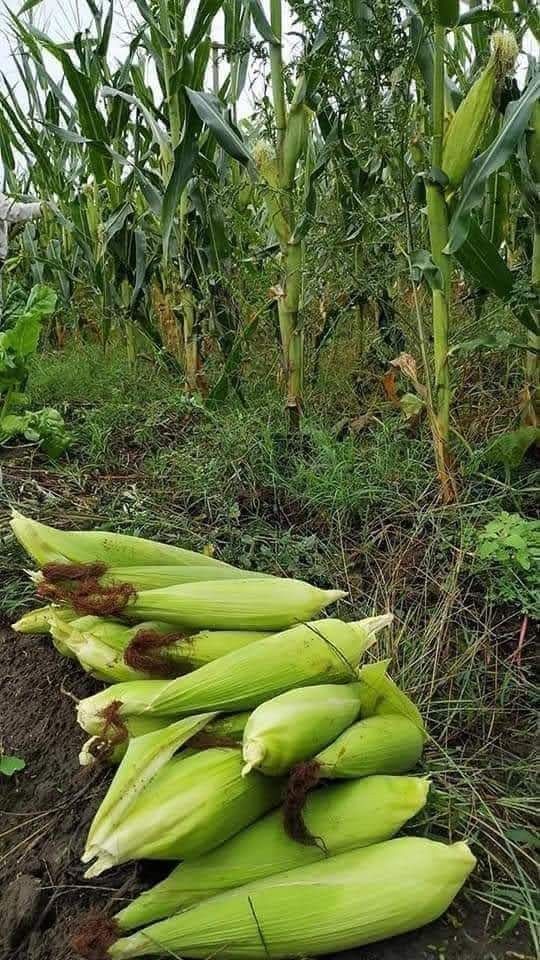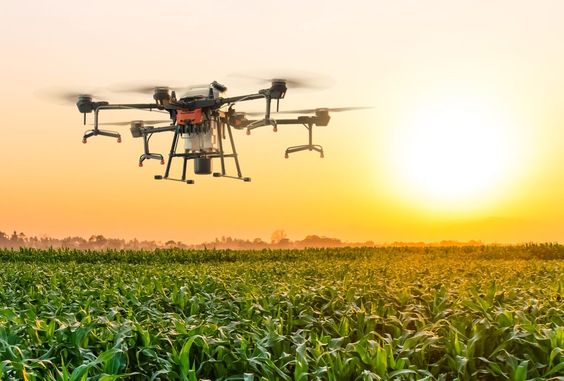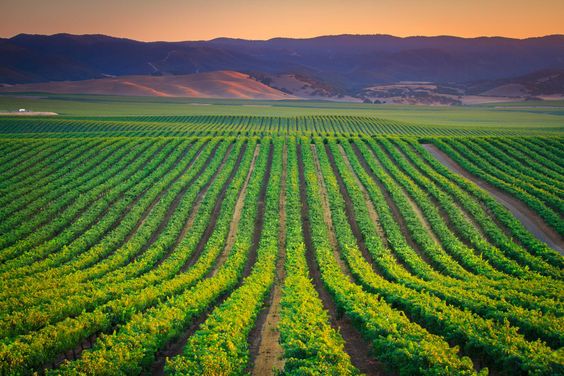Corn Quality Improvement with Smart Agriculture: Enhancing Crop Standards
Corn Quality Improvement, a vital crop in global agriculture, is indispensable for food, feed, and biofuel industries. As global populations rise and food security becomes a more pressing concern, the demand for high-quality corn continues to escalate. Improving corn quality is not just about increasing yields but also ensuring that the corn produced meets the stringent requirements of various industries. This challenge is compounded by environmental factors, changing climate conditions, and the need to maintain sustainable farming practices. Smart Agriculture offers a way forward by integrating advanced technologies with traditional farming practices to optimize corn quality. This article delves into the myriad ways Smart Agriculture can enhance corn quality, the technologies involved, the benefits, objectives, and the broader implications for the agricultural sector.
Contents
- 0.1 The Role of Smart Agriculture in Corn Quality Improvement
- 0.2 Precision Farming and Soil Health
- 0.3 Climate-Smart Solutions for Corn Farming
- 0.4 Pest and Disease Management
- 0.5 Irrigation Management and Water Use Efficiency
- 0.6 Harvesting and Post-Harvest Management
- 0.7 Data-Driven Decision Making
- 1 Benefits of Smart Agriculture in Corn Quality Improvement
- 2 Objectives of Implementing Smart Agriculture in Corn Farming
- 3 Explanation of Smart Agriculture Technologies
- 4 Usefulness of Smart Agriculture in Corn Quality Improvement
- 5 Advantages of Smart Agriculture in Corn Quality Improvement
The Role of Smart Agriculture in Corn Quality Improvement
Smart Agriculture, also known as precision agriculture, is an innovative approach that integrates cutting-edge technologies to optimize farming practices. The role of Smart Agriculture in improving corn quality can be summarized in the following areas:
- Precision Farming: Utilizing GPS technology, precision farming enables farmers to apply inputs such as fertilizers, pesticides, and water with pinpoint accuracy. This reduces waste, enhances soil health, and improves corn quality by ensuring that each plant receives the optimal amount of resources.
- IoT Devices: Internet of Things (IoT) devices, such as soil moisture sensors and weather stations, provide real-time data on field conditions. This data allows for timely interventions that maintain optimal growing conditions and prevent quality degradation.
- Drones and Satellite Imagery: Drones equipped with multispectral cameras and satellites provide detailed imagery of fields, allowing farmers to monitor crop health and identify issues early. This proactive approach leads to better crop management and improved corn quality.
- Data Analytics and Machine Learning: By analyzing vast amounts of data from various sources, machine learning algorithms can predict outcomes and recommend actions that improve corn quality. This data-driven approach allows for continuous improvement in farming practices.
Precision Farming and Soil Health
Soil health is foundational to crop quality. In the context of corn farming, soil health influences:
- Nutrient Availability: Healthy soil provides essential nutrients that are readily available to corn plants. Smart Agriculture technologies, such as soil sensors and precision application systems, ensure that nutrients are applied efficiently and in the correct amounts, leading to better nutrient uptake and higher quality corn.
- Soil Structure and Composition: Maintaining good soil structure is essential for root development and water retention. Techniques such as no-till farming, supported by Smart Agriculture tools, help preserve soil structure and prevent erosion.
- Soil Microbial Activity: Beneficial microbes in the soil contribute to nutrient cycling and disease suppression. Precision farming practices that promote soil health also support microbial diversity, which in turn enhances corn quality.
Climate-Smart Solutions for Corn Farming
Climate change presents a significant challenge to corn farming, affecting both yield and quality. Smart Agriculture provides several climate-smart solutions to mitigate these impacts:
- Predictive Analytics: Using historical data and current weather patterns, predictive models can forecast potential climate-related issues such as droughts or floods. This allows farmers to take preemptive actions, such as adjusting planting schedules or selecting drought-resistant corn varieties, to maintain crop quality.
- Climate-Resilient Farming Practices: Smart Agriculture promotes practices that increase the resilience of corn crops to climate variability. These include the use of cover crops, efficient irrigation systems, and precision nutrient management.
- Adaptive Management Strategies: Real-time data from IoT devices and weather stations enables farmers to adapt their management strategies as conditions change. For example, adjusting irrigation schedules based on real-time soil moisture data ensures that corn plants receive adequate water without over-irrigation, which can harm crop quality.
Pest and Disease Management
Pests and diseases are among the most significant threats to corn quality. Smart Agriculture offers several tools to combat these challenges effectively:
- Remote Sensing and Early Detection: Drones and satellites equipped with sensors can detect signs of pest infestations or disease outbreaks early, often before they are visible to the naked eye. Early detection allows for targeted interventions, reducing the need for broad-spectrum pesticides and preserving corn quality.
- AI-Driven Pest Management: Artificial intelligence can analyze data from multiple sources to predict pest and disease outbreaks. This predictive capability allows farmers to implement integrated pest management (IPM) strategies that are both effective and environmentally friendly.
- Biocontrol Methods: Smart Agriculture encourages the use of biocontrol methods, such as introducing natural predators or beneficial insects, to control pest populations. These methods reduce reliance on chemical pesticides, which can negatively impact corn quality and the environment.

Irrigation Management and Water Use Efficiency
Water management is critical to maintaining corn quality, especially in regions where water scarcity is an issue. Smart Agriculture enhances water use efficiency through:
- Automated Irrigation Systems: These systems use data from soil moisture sensors and weather forecasts to deliver the right amount of water at the right time. This prevents both under- and over-irrigation, ensuring that corn plants receive adequate water throughout the growing season.
- Precision Irrigation Techniques: Techniques such as drip irrigation or variable rate irrigation (VRI) deliver water directly to the root zone, minimizing evaporation and runoff. This not only conserves water but also improves corn quality by maintaining consistent soil moisture levels.
- Water Stress Monitoring: IoT devices monitor water stress levels in real-time, alerting farmers when plants need water. This ensures that corn plants remain healthy and capable of producing high-quality kernels.
Harvesting and Post-Harvest Management
The quality of corn can be significantly affected by harvesting and post-harvest practices. Smart Agriculture provides several tools to optimize these stages:
- Automated Harvesting Equipment: Precision harvesters equipped with sensors can determine the optimal time to harvest corn based on moisture content and kernel maturity. This ensures that corn is harvested at its peak quality.
- Post-Harvest Storage Solutions: Smart storage solutions monitor temperature, humidity, and other conditions in storage facilities. This reduces the risk of spoilage and maintains corn quality until it reaches the market.
- Supply Chain Optimization: Smart Agriculture extends beyond the farm, optimizing the entire supply chain from field to market. By integrating data from various stages of production, processing, and distribution, farmers can ensure that corn quality is preserved throughout the supply chain.
Data-Driven Decision Making
At the heart of Smart Agriculture is data. The ability to collect, analyze, and act on data is what sets Smart Agriculture apart from traditional farming practices. In the context of corn quality improvement, data-driven decision-making involves:
- Real-Time Monitoring: Continuous monitoring of field conditions allows farmers to respond quickly to changes, whether it’s a sudden drop in soil moisture or the onset of a pest infestation.
- Predictive Analytics: By analyzing historical data and current trends, predictive analytics can forecast future conditions and suggest the best course of action to maintain or improve corn quality.
- Farm Management Software: Advanced farm management software integrates data from various sources, providing farmers with a comprehensive view of their operations. This enables more informed decisions that directly impact corn quality.
Benefits of Smart Agriculture in Corn Quality Improvement
1. Increased Yield and Profitability
Corn Quality Improvement,Improving corn quality through Smart Agriculture not only enhances yield but also boosts profitability. High-quality corn is in demand across various industries, from food production to biofuel manufacturing, and commands premium prices. By optimizing every aspect of corn production, Smart Agriculture ensures that farmers can maximize their returns while meeting market demands for quality.
2. Enhanced Resource Efficiency
Corn Quality Improvement,Smart Agriculture technologies promote the efficient use of resources such as water, fertilizers, and pesticides. This efficiency translates into lower production costs and reduced environmental impact. For example, precision nutrient management ensures that plants receive the exact amount of fertilizer they need, reducing waste and preventing nutrient runoff into waterways.
3. Sustainable Farming Practices
Corn Quality Improvement,Sustainability is at the core of Smart Agriculture. By minimizing the use of chemical inputs and promoting practices that enhance soil health, Smart Agriculture contributes to long-term agricultural sustainability. This approach not only improves corn quality but also ensures that farming remains viable for future generations.
4. Improved Resilience to Climate Change
Corn Quality Improvement,Climate change is one of the greatest challenges facing agriculture today. Smart Agriculture equips farmers with the tools they need to adapt to changing conditions and maintain crop quality. For instance, by using predictive models and real-time data, farmers can adjust their practices to mitigate the effects of extreme weather events, such as droughts or floods.
5. Enhanced Food Security
Corn Quality Improvement,By improving corn quality and yield, Smart Agriculture contributes to global food security. As the world’s population continues to grow, ensuring a stable supply of high-quality food is crucial. Smart Agriculture helps farmers produce more food on less land while maintaining the quality needed to meet consumer demands.
Objectives of Implementing Smart Agriculture in Corn Farming
1. Maximizing Corn Quality and Yield
Corn Quality Improvement,The primary objective of implementing Smart Agriculture in corn farming is to maximize both crop quality and yield. Achieving this requires a holistic approach that integrates technology, data, and best practices to optimize every stage of production. By focusing on quality as well as quantity, Smart Agriculture helps farmers meet the needs of the modern market.
2. Promoting Sustainability
Another key objective of Smart Agriculture is to promote sustainable farming practices. This involves reducing the environmental impact of agriculture, preserving natural resources, and ensuring that farming remains viable for future generations. In the context of corn farming, this means using resources efficiently, maintaining soil health, and minimizing the use of harmful chemicals.
3. Enhancing Farmer Decision-Making
Corn Quality Improvement Smart Agriculture provides farmers with the data and tools needed to make informed decisions. Whether it’s choosing the best seed varieties, determining the optimal planting time, or deciding when to harvest, Smart Agriculture enables farmers to make decisions that directly improve corn quality. This data-driven approach leads to more precise farming practices and better overall outcomes.
4. Reducing Production Costs
Corn Quality Improvement,By optimizing resource use and minimizing waste, Smart Agriculture helps reduce production costs. For example, precision irrigation techniques reduce water usage, while precision nutrient management minimizes fertilizer costs. These savings allow farmers to invest in quality-enhancing practices without compromising profitability.
5. Ensuring Consistent Quality Across Seasons
Corn Quality Improvement,One of the challenges in agriculture is maintaining consistent quality across different growing seasons, especially in the face of changing climate conditions. Smart Agriculture helps address this challenge by providing tools and technologies that allow farmers to monitor and manage their crops more effectively, leading to consistent quality year after year.

Explanation of Smart Agriculture Technologies
1. IoT Devices and Sensors
Corn Quality Improvement,IoT devices and sensors are at the forefront of Smart Agriculture, providing real-time data that is critical for informed decision-making. These devices include:
- Soil Moisture Sensors: Corn Quality Improvement,These sensors monitor soil moisture levels, ensuring that crops receive adequate water without the risk of over- or under-irrigation. This is particularly important for maintaining corn quality, as water stress can significantly affect kernel development.
- Weather Stations: On-farm weather stations provide real-time data on temperature, humidity, wind speed, and rainfall. This information helps farmers make decisions about irrigation, pest management, and other practices that affect corn quality.
- Crop Health Sensors: These sensors, often mounted on drones or tractors, monitor the health of crops by measuring factors such as chlorophyll levels, which indicate the plant’s photosynthetic activity. This allows farmers to detect nutrient deficiencies or diseases early and take corrective action.
2. Drones and Aerial Imaging
Corn Quality Improvement,Drones equipped with multispectral and thermal cameras provide detailed aerial imagery of corn fields. This imagery can be used to:
- Assess Crop Health: Multispectral imaging can detect variations in crop health that are not visible to the naked eye. For example, it can reveal areas of a field where plants are under stress due to nutrient deficiencies, pests, or diseases.
- Monitor Growth Stages: Drones can monitor the growth stages of corn plants, providing data that helps farmers decide the optimal time for fertilization, irrigation, and other interventions.
- Identify Field Variability: Aerial imaging helps farmers identify variability within a field, allowing for site-specific management practices that improve overall corn quality.
3. Artificial Intelligence and Machine Learning
Corn Quality Improvement,AI and machine learning are transforming agriculture by providing predictive insights and automation. These technologies are used to:
- Predict Pest and Disease Outbreaks: Machine learning algorithms analyze weather data, crop health data, and historical trends to predict the likelihood of pest or disease outbreaks. This allows farmers to implement preventive measures and reduce the risk of quality loss.
- Optimize Resource Use: AI can optimize the use of resources such as water, fertilizers, and pesticides by analyzing data from multiple sources and recommending the most efficient practices. This leads to better crop quality and reduced environmental impact.
- Automate Decision-Making: AI-driven systems can automate routine decisions, such as when to irrigate or apply fertilizers, based on real-time data. This reduces the burden on farmers and ensures that crops receive consistent care.
4. Precision Agriculture Tools
Corn Quality Improvement,Precision agriculture tools enable farmers to manage their fields with a high degree of accuracy. These tools include:
- GPS-Guided Tractors: These tractors use GPS technology to guide planting, fertilizing, and harvesting operations with precision. This ensures that each row of corn is planted at the optimal distance, receives the right amount of fertilizer, and is harvested at the right time.
- Variable Rate Technology (VRT): VRT allows farmers to apply inputs such as seeds, fertilizers, and water at variable rates across a field based on soil conditions and crop needs. This tailored approach improves resource efficiency and enhances corn quality.
- Precision Planting Equipment: Precision planting equipment ensures that seeds are planted at the correct depth and spacing, which is critical for achieving uniform crop emergence and high-quality yields.
Usefulness of Smart Agriculture in Corn Quality Improvement
1. Real-Time Monitoring and Intervention
Corn Quality Improvement,One of the most significant advantages of Smart Agriculture is the ability to monitor crops in real-time. This continuous monitoring allows for immediate interventions when issues arise, preventing small problems from becoming major threats to corn quality. For example, if a sensor detects a drop in soil moisture, an automated irrigation system can be activated to restore optimal conditions.
2. Data-Driven Optimization
Corn Quality ImprovementSmart Agriculture relies on data to optimize every aspect of corn production. By analyzing data from soil sensors, weather stations, drones, and other sources, farmers can make precise adjustments to their practices. This data-driven optimization ensures that resources are used efficiently and that corn quality is consistently high.
3. Adaptation to Environmental Changes
Corn Quality Improvement,Environmental changes, whether due to climate change or other factors, can have a significant impact on corn quality. Smart Agriculture provides tools that allow farmers to adapt to these changes in real-time. For example, if a weather station predicts an incoming storm, farmers can take preventive measures, such as adjusting irrigation schedules or applying protective treatments, to safeguard their crops.
4. Precision in Input Application
Corn Quality Improvementm,The precision offered by Smart Agriculture extends to the application of all inputs, including water, fertilizers, and pesticides. This precision ensures that each plant receives exactly what it needs, reducing waste and preventing over-application, which can harm crop quality. For instance, variable rate technology can apply fertilizers at varying rates across a field based on soil nutrient levels, ensuring that each part of the field receives the optimal amount.
5. Early Detection of Problems
Corn Quality Improvement Smart Agriculture technologies enable early detection of issues that can affect corn quality. For example, drones equipped with thermal cameras can detect water stress in plants before it becomes visible, allowing for timely interventions. Similarly, AI-driven pest detection systems can identify the early stages of an infestation, enabling farmers to take action before the problem spreads.
6. Improved Efficiency and Productivity
Corn Quality Improvement,By optimizing resource use and automating routine tasks, Smart Agriculture improves the overall efficiency and productivity of corn farming. This not only leads to higher-quality crops but also allows farmers to manage larger areas with the same or fewer resources. For example, automated irrigation systems can cover large fields more efficiently than traditional methods, ensuring consistent water supply and better corn quality.
Advantages of Smart Agriculture in Corn Quality Improvement
1. Enhanced Competitiveness in the Market
Farmers who adopt Smart Agriculture practices are better positioned to produce high-quality corn that meets market demands. This enhanced competitiveness can lead to better prices and increased market share. For example, premium food manufacturers may be willing to pay more for corn that meets strict quality standards, providing a financial incentive for farmers to invest in Smart Agriculture technologies.
2. Environmental Stewardship
Corn Quality Improvement Smart Agriculture promotes environmental stewardship by reducing the use of chemical inputs and minimizing the impact of farming on natural resources. By adopting sustainable practices, farmers can improve corn quality while also protecting the environment. This not only benefits the current generation but also ensures that farming remains viable for the future.
3. Long-Term Viability of Corn Farming
Corn Quality Improvement,The long-term viability of corn farming depends on the ability to adapt to changing conditions and maintain consistent quality. Smart Agriculture provides the tools and technologies needed to achieve this, ensuring that farmers can continue to produce high-quality corn in the face of challenges such as climate change, soil degradation, and resource scarcity.
4. Increased Consumer Confidence
Corn Quality Improvement,Consumers are becoming increasingly concerned about the quality and sustainability of the food they consume. By adopting Smart Agriculture practices, farmers can meet these consumer demands and increase confidence in their products. This can lead to stronger relationships with buyers and increased loyalty from customers who value high-quality, sustainably produced corn.
5. Enhanced Traceability and Transparency
Corn Quality Improvement Smart Agriculture technologies enable enhanced traceability and transparency in the corn supply chain. For example, IoT devices can track the conditions under which corn is grown, harvested, and transported, providing detailed information to consumers and buyers. This transparency can lead to increased trust and confidence in the product, as well as better market opportunities for farmers.
6. Contribution to Global Food Security
Corn Quality Improvement,By improving corn quality and yield, Smart Agriculture contributes to global food security. As the world’s population continues to grow, ensuring a stable supply of high-quality food is crucial. Smart Agriculture helps farmers produce more food on less land while maintaining the quality needed to meet consumer demands.
Corn Quality Improvement Smart Agriculture is transforming corn farming by providing innovative solutions for improving crop quality. By integrating advanced technologies with traditional farming practices, Smart Agriculture enables farmers to optimize every aspect of corn production, from planting to harvesting. The benefits of Smart Agriculture extend beyond individual farms, contributing to the overall health and productivity of the agricultural sector. As the demand for high-quality corn continues to rise, adopting Smart Agriculture practices will be essential for meeting global food security needs and ensuring the long-term success of corn farming.
